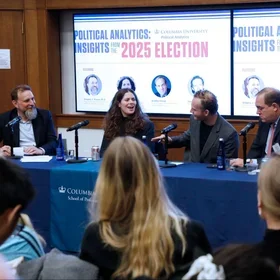The U.S. Supreme Court seems out of touch with reality. It seems to be making policy for a country that hasn’t existed for a long time. Its agenda of cases selected for decision are being set by ideological rather than actual concerns. And I suspect that many of those ideologically opposed to abortion rights and other forms of freedom exercise those rights privately. When I was a doctoral student in political science and public policy, one of the topics that most interested me was the political agenda-setting process. I was interested in how general concerns became political issues, what made some issues legitimate, and what made other issues illegitimate. It was clear to me that one way the power-elite maintained power was through non-decision-making—simply keeping issues off the agenda by delegitimizing them. Issues like gay marriage and rights, gender and racial equity, drug legalization, contraception, and abortion reflected and reinforced social and cultural reality in 19th and early 20th century America and could not achieve political agenda status. But America’s culture and society changed and that compelled changes in political reality. Public policy came to reflect that reality. But something has changed. The recent decisions by the U.S. Supreme Court to overturn Roe v. Wade and to overturn strict limits on concealed weapons in New York City create a new political reality far out of step from social and cultural reality.
In authoritarian regimes, political reality can redefine cultural and social reality. In democracies, it is the political reality that must give way to societal demands. We will know if America remains a democracy if the ideologues in the Supreme Court are able to somehow change America’s social and cultural reality. We will know majority rule is dead if political decision-making can turn back the clock and right-wing extremists can reimpose their preferences on a resistant majority. I’m betting on the maintenance of American democracy and the dominance of actual reality over the Court’s new political reality. Government is not the only power center in American life. Private corporations and institutions like universities also exercise power. Disney, for example, will pay travel expenses for employees needing to engage in family planning services (such as abortions) unavailable in the state they work in. Other corporations will be doing the same. State and local governments are moving in two directions: some are moving in the direction of the radical court, others are moving to ensure that political reality matches social reality.
Some of America’s cultural and social realities that changed over the past century took place due to technological change. The invention of birth control and abortion pills are examples of that sort of change. The technologies of automation, computers, mass media, and social media led to the development of the brain-based economy and the reduction of the brawn-based economy. This ultimately led to fewer gender distinctions in the world of work and demands for gender equity at work. Global travel and the global economy led some white Americans to see firsthand the world’s racial, ethnic, and cultural diversity; and the slow beginning of racial integration of the American military along with the migration of African Americans north provided opportunities for the fragile start of racial integration in America.
Starting in the second half of the twentieth century and continuing to today, these forces of globalization, technology, and communication have changed our culture and society in tangible ways. Everyone has gay friends and family members who do not keep their sexual preferences a secret. Interracial couples and more diverse social circles are common. The Proud Boys and similar white supremacist groups don’t like it, but these trends cannot be prevented. Hitler tried and failed to establish a race-based regime. America will never again be a white majority nation. Our daily experiences with people of different races and cultural histories demonstrate that humans of all kinds have far more in common than not. That experience is our reality, regardless of political efforts to keep people apart. The social nature of the human species will continue to result in inter-racial and inter-cultural relationships and friendships. No walls or xenophobic policies can prevent that. Once travel made it easy for us to mingle, so we mingled. Look at how travel rapidly recovered as COVID fears eased, and you see evidence of our urge to engage with each other.
Birth control, abortion, surrogate parenting, efforts to utilize medical technologies to enable difficult pregnancies, and non-traditional and intentional family structures cannot be prevented by courts, laws, and acts of politics. These behaviors are common in America and are accepted in our culture. Public opinion data demonstrates, for example, that while most Americans support regulation of abortion, they also support a woman’s right to choose. Jan Wolfe, reporting in the Wall Street Journal on Clarence Thomas’ concurring opinion on the overturning of Roe v. Wade noted that:
“When the Supreme Court removed the constitutional right to an abortion, most of the justices in the majority focused on what they described as the “egregiously wrong” ruling that established that right in Roe v. Wade in 1973. Justice Clarence Thomas took a broader view. In his opinion concurring with the majority, he wrote that if the legal underpinnings of Roe v. Wade were wrong, then so were the underpinnings of other rights not enumerated in the Constitution that the court recognized in recent decades. They include the right of married couples to use contraception, the right to same-sex romantic relationships and, in 2015, the right to same-sex marriage. Justice Thomas’s stance raised the prospect that new challenges would soon be mounted against those rights, keying off the decision in the abortion case.”
This extremely ideological perspective is far out of step with the cultural context of the reality that Americans experience. Efforts to regulate popular behavior and bring back the values and culture perhaps more common in the late 19th to mid-20th century will either fail or result in political instability that will in turn impact America’s economic well-being. America’s corporations find themselves caught between employees and customers who hold mainstream cultural values and state governments—and now the U.S. Supreme Court—that are formulating public policies way out of step from the reality that they experience. Like Disney, they’ll develop workarounds and ensure that out-of-step public policies are neutralized.
While America’s cultural and social life continues to evolve, so too does the political divide of red state versus blue state. This means that some states will have policies in synch with evolving norms and others will not. I will be fascinated and surprised if the rate of teenage abstinence in red states differs from blue states. It is possible that people attracted to red-state cultural values will move to those states and those attracted to blue-state values will move to blue states and we will have two very different political regimes controlling states and an increasingly dysfunctional policy agenda and political regime in Washington. Some of that population movement is already underway. My view is that these cultural and social shifts are deeper than political ideology. Nevertheless, red states will allow businesses to operate without regulation and, due to anti-tax ideology, will have taxes too low to adequately finance the public infrastructure whose revenue stream requires subsidy and is not amenable to privatization. They will also be slower to develop a modern, decarbonized, and more efficient energy system, and will end up with more expensive and less reliable energy and transportation infrastructure.
This is not a new story. States like Mississippi, Louisiana, Kentucky, West Virginia, and Arkansas are much poorer than states such as California, New York, Florida, and Texas. Economic history, geography, political culture, and leadership explain these distinctions. It will be interesting to see if the corporate power in Florida and Texas will moderate the red-state tendencies both states have begun to demonstrate. If red-state governments outlaw gay marriage, contraception, racial equity, and the teaching of America’s actual history, they may find themselves so out of synch with America’s cultural and social norms that they will have trouble attracting people and businesses.
The point is that the political agenda-setting process and the ensuing political reality cannot be divorced from economic, social, and cultural forces. The Supreme Court will find its legitimacy, and ultimately power, reduced if it does not accommodate that reality. Reality and political reality must eventually synchronize. If American political institutions are unable to reflect social reality, the result will be political instability. Given the modern technology of destruction, such instability in a nation as powerful as ours would have a devastating global impact. I do not believe that we are suicidal, so I must believe that the counterforces to this radical Court will be able to restrain the impact of its public policies.
This article was originally published in State of the Planet.


